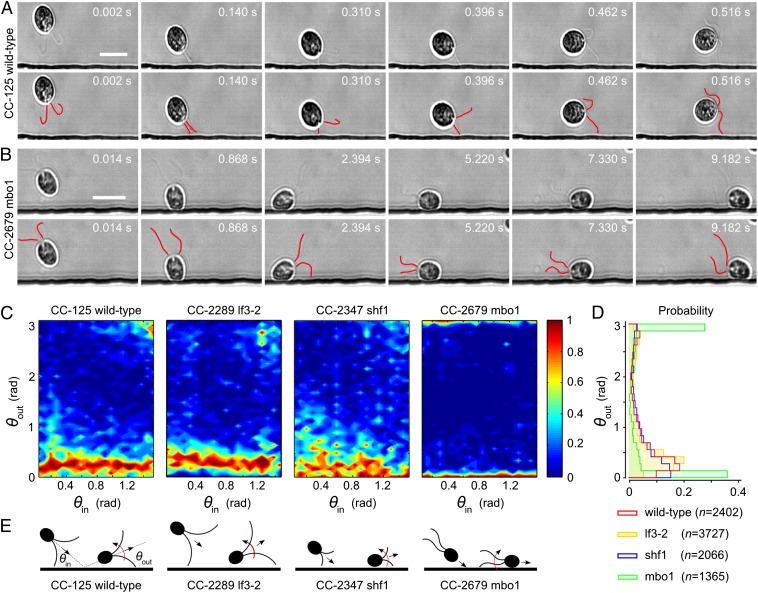Fig. 2.
Surface scattering of Chlamydomonas is governed by ciliary contact interactions. (A) Scattering sequence for WT Chlamydomonas CC-125 (Movie S3). (Upper) Original micrographs. (Lower) Cilia manually marked red. Results for the long-flagella mutant lf3-2 and the short-flagella mutant shf1 look qualitatively similar (Movies S4 and S5). (Scale bar: 20 μm.) (B) The mutant pusher mbo1 remains trapped for several seconds (Movie S6). (Scale bar: 20 μm.) (C) The conditional probability distributions P(θout|θin) indicate that, for all four strains, memory of the incidence angle is lost during the collision process, due to multiple flagellar contact with the surface. (D) The cumulative scattering distribution P(θout) shows how cilia length and swimming mechanisms determine the effective surface-scattering law. (E) Schematic illustration of the flagella-induced scattering and trapping mechanisms.

